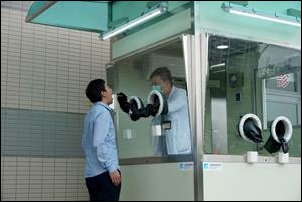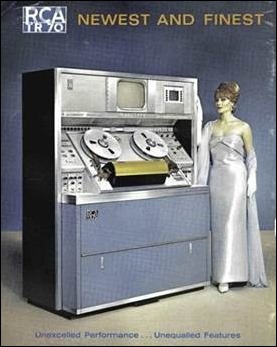Curbside Consult with Dr. Jayne 3/29/21

I recently received an email from Doximity, which is kind of like a physician-specific LinkedIn that also offers some services such as being able to call patients using your cell phone but have your office number display in the caller ID. The email invited me to review a personalized report on diagnostic behavior among US clinicians, comparing me to other family physicians using data provided by CMS. It sounded interesting, so of course I clicked the button. It goes without saying that when CMS data is your kind of clickbait, you must be a clinical informaticist.
The actual report was less exciting than the teaser – it only showed five diagnoses for a total of seven claims. Sinusitis was the leader, with pinkeye, wrist sprain, allergic rhinitis, and right lower quadrant pain following. That’s a typical day in urgent care, but I was surprised to see such a small number of claims. Digging deeper into the information that came with the report, the data was drawn from CMS claims files available at Data.CMS.gov. It also reflected the 2019 calendar year. I’m pretty sure I saw more than seven Medicare beneficiaries in 2019, but who knows how the data was parsed.
There was also a set of comparison data, looking at how I fared versus other physicians in my specialty in the same state. I apparently see significantly fewer cases of hip pain, cellulitis, and bronchitis than my peers. I found that funny since I’m an urgent care physician and those kinds of acute conditions make up the bulk of my practice. I’m sure they were pulling the data using the CMS specialty taxonomy codes alone and not stratifying by place of service. I wonder how I would stack up against other urgent care docs in my area. The top diagnoses in my state were not surprising – hypertension, hyperlipidemia, and type 2 diabetes. These were similar to national diagnosis rates.
The one thing I did find surprising was the number of encounters that they said family physicians were billing for “Encounter for screening mammogram for malignant neoplasm of breast.” I don’t know a single family physician who performs or interprets mammograms, so I was surprised that the data said that more than 71,000 of my peers have been documenting it on claims. Based on the coding education I’ve received, it should only be coded by the person reading the mammogram, but maybe something has changed and I missed it because I’ve been deep in the COVID-19 trenches.
I visited the CMS data site and try to find the raw data to see if I could come up with other conclusions, but was never able to find the correct file for 2019. Probably it was there but named something that didn’t click in my brain as being a claims data file, even though I tried various filters and searches including just trying to restrict to outpatient data. I would be curious to see how the diagnosis patterns shifted over the years and whether the usual problems are still the usual problems. I know there have been some shifts in conditions like sinusitis due to the pandemic, since more people are wearing masks.
I’m not sure how useful the data would be if I had it since it’s just Medicare data, and Medicare beneficiaries represent a small percentage of my practice. It would be much more useful as a provider to be able to see a big, aggregated data set that looked at multiple years, irrespective of where I’ve practiced. Sure, you could get your diagnosis mix out of your EHR, but for people like me who have worked in a variety of settings and places, that’s easier said than done.
Data is interesting stuff, but it’s only as powerful as the people who have access to it and the tools they have to manipulate it. If we really want to use it to make change, we need to be able to further stratify it. For example, what does my data look like when compared against other in-person urgent care settings? How does an independently-owned urgent care’s treatment habits compare against one that is owned by a hospital system? Does it make a difference whether physicians are full-time or part-time, or how long it has been since they finished their medical training? It would be fun to have that kind of data at your fingertips, at least if you’re someone who’s into that sort of thing.
Although I’m pretty good at manipulating data, I miss having easy access to dedicated data analysts on a daily basis. As a CMIO, I loved having a team where I could explain a business problem and trust that they knew not only how to find the data in the applications (or who would know, if they didn’t) but also the best ways to render it depending on the intended audience. Working with my health system clients, I tend to be at the mercy of their IT teams and sometimes it can take weeks for a request ticket to make it through the support queues before I hear from someone who will attempt to track down the information I’m looking for. Sometimes it even takes so long that by the time we have an answer to the question, the team has moved forward with a decision without the benefit of data. That can be maddening, but it’s common when there is a mismatch of supply and demand.
I think the more useful type of report looks at not only what you diagnosed, but how you treated it, as well as whether the condition was well controlled if it’s a chronic one. Physicians seem to see some of those reports more often in the post-Meaningful Use era than they used to previously, but I know that some organizations only present their clinicians with data a couple of times a year where others may have monthly or real-time access. If there are any physicians out there who received a similar report from Doximity, I’m curious what you thought of your data and whether it was useful in any way.
What kind of reports would help your clinicians deliver the best care and best outcomes? How often should they be reviewed? Leave a comment or email me.

Email Dr. Jayne.















I believe it is this: https://www.investopedia.com/terms/w/warrant.asp So an option, but one provided by the original company.